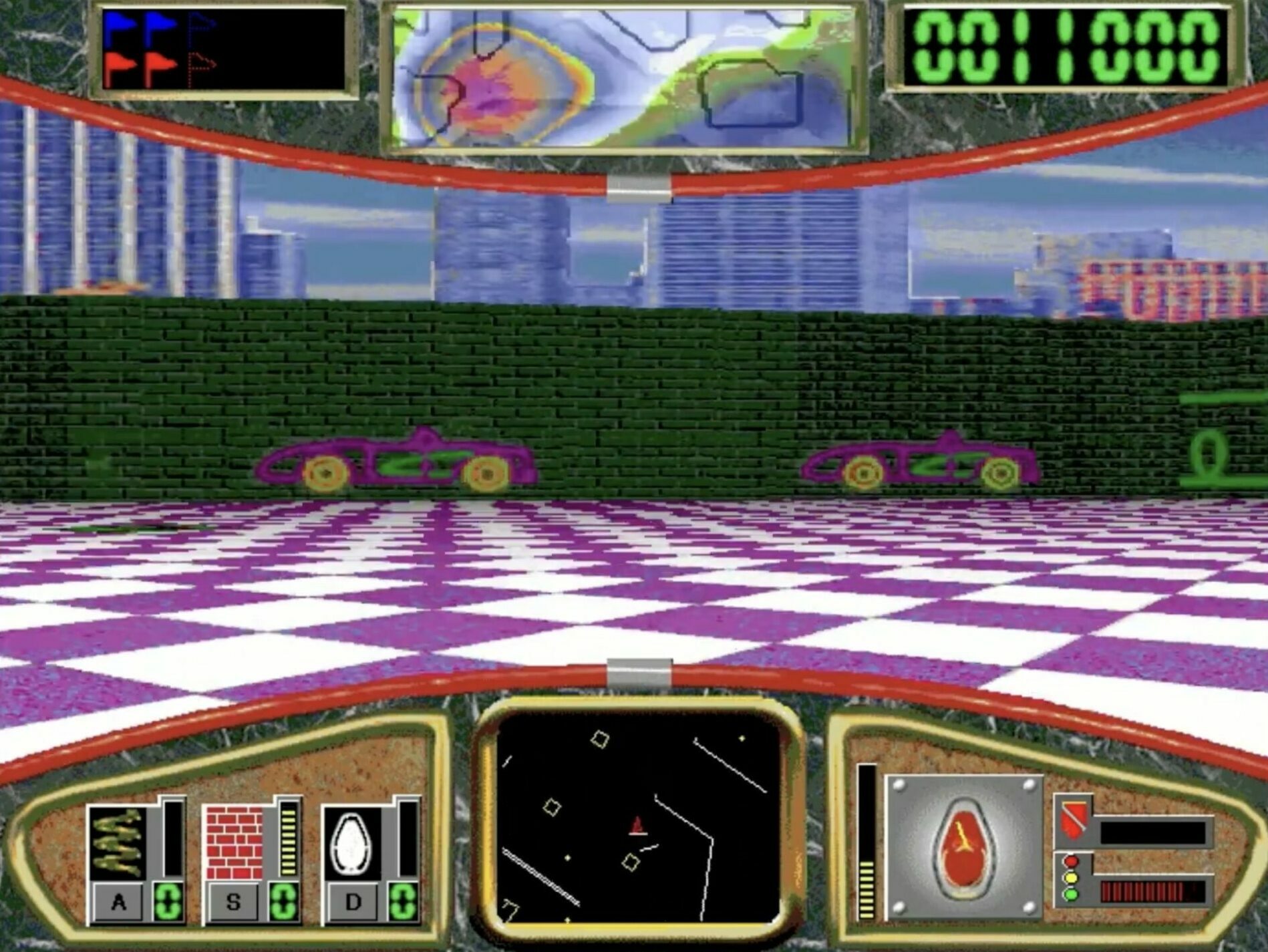In the mid-90s, “multimedia” was the word when it came to personal computers. The concept of a home machine that could play music and video via compact disc was still relatively novel, and hardware companies routinely bundled software with their products designed to show off these capabilities. One such piece of software, developed by Microsoft itself, was the 1995 game Hover!
By today’s standards, Hover! is a simple enough title. The player pilots a small hovercraft that resembles a bumper car through three different maps — a castle, a sewer, and a sci-fi city — and attempts to collect all of the enemy’s flags before the opposing team grabs theirs. It sounds like a premise for an early PC multiplayer game, but Hover! only supports a single player. The AI-controlled enemy team is split into a capture group, which pursues the player’s flags, and a defense group, which tries to ram into the player. Similar to games like Mario Kart, there are collectible items throughout the area that allow the player to deploy a wall, jump into the air, or turn invisible.
I wasn’t terribly captivated by Hover! as a kid — there were no colorful characters like in most console games of the time, and some of the other software that came with our computer (an animation program, Encarta, etc.) were more appealing. But it was still a neat little novelty, a cool little peek into the future of computer games. In retrospect, the best thing about Hover! was its soundtrack by the prolific Stan LePard, who went on to make music for games like Halo: Reach, Destiny, and Guild Wars 2 and sadly passed away last year. For people over a certain age, however, LePard is probably best known for “Velkommen,” (aka “title.wma”) the Windows XP installation music.
As for Hover!, Microsoft re-released it as a browser game in 2013, again as a demonstration of new computing capabilities — this time, the then-new WebGL. This version was shut down in 2019, but you can download the original from the Internet Archive. If you do check it out, make sure to hold CTRL and enter “ibmab” on the intro screen to access the debug room, where you can see portraits of LePard and the rest of the development team.

Leave a Reply